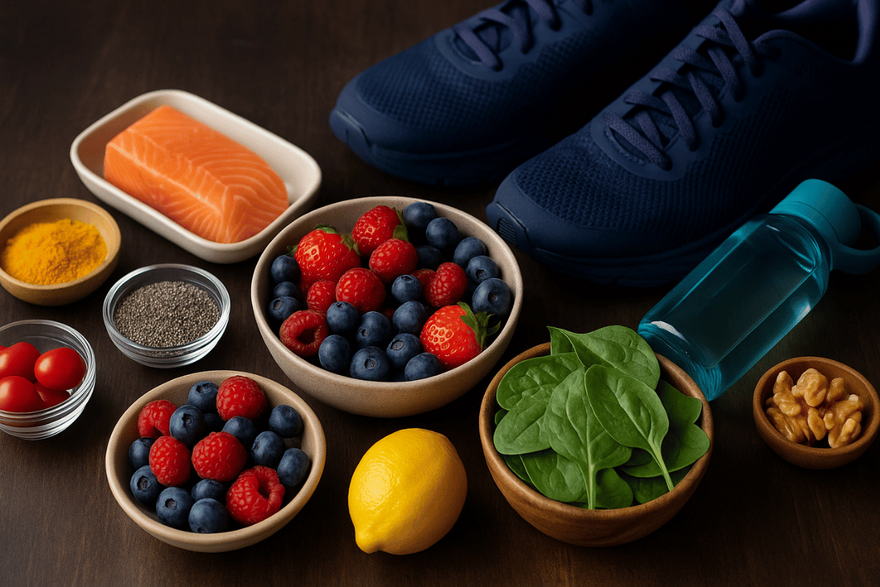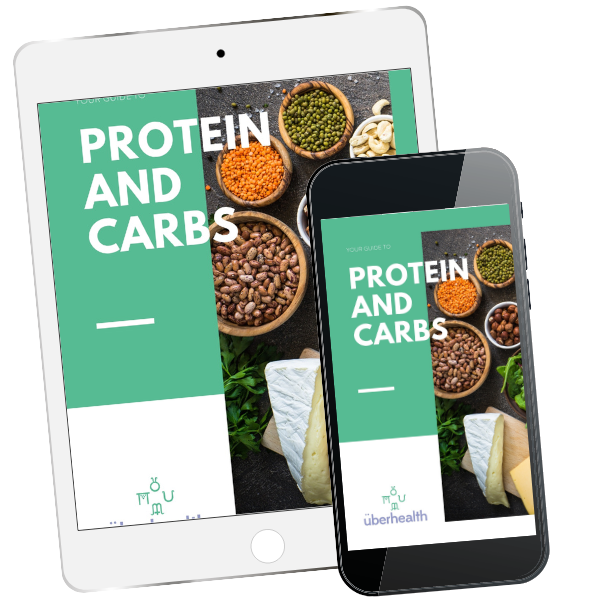Inflammation and Weight Loss Resistance: Understanding the Missing Link

You’re training consistently, eating “clean,” and doing everything right… yet the scales won’t budge, energy is low, and recovery feels slower than it should.
One possible culprit? Chronic inflammation.
While short-term inflammation is a normal and necessary part of exercise and healing, low-grade chronic inflammation can sabotage fat loss, blunt performance, and affect how your body regulates hunger and energy.
Once you understand the role of inflammation in weight regulation, you can use nutrition and lifestyle strategies to bring your body back into balance without accidentally blunting the very adaptations that training creates.
What is Inflammation?
Inflammation is your body’s immune response to stress or injury. It helps fight off infections, repair tissues, and restore balance.
There are two main types:
- Acute inflammation: Short-lived, beneficial (e.g., sore muscles after training or healing a cut)
- Chronic inflammation: Persistent, low-grade, harmful (linked to weight loss resistance, fatigue, and metabolic disruption)
Chronic Inflammation and Weight Loss Resistance
Chronic inflammation contributes to metabolic dysfunction and can make fat loss harder in several ways:
- Hormonal Disruption
Inflammation increases cortisol and interferes with insulin sensitivity. This leads to higher blood sugar, more fat storage (especially abdominal), and increased hunger. - Leptin and Ghrelin Imbalance
Leptin (satiety hormone) and ghrelin (hunger hormone) can become dysregulated, making it harder to recognise fullness and easier to overeat. - Mitochondrial Impairment
Inflammation can damage mitochondria (your energy powerhouses), reducing energy production and making training feel harder. - Slower Recovery & More Fatigue
Chronic low-grade inflammation leaves you feeling sore, tired, and unmotivated, creating a vicious cycle of less activity and more cravings.
Causes of Chronic Inflammation in Active People
- Poor sleep or inconsistent recovery
- Overtraining without adequate rest
- Highly processed diets (refined oils, sugar, additives)
- Gut dysbiosis (imbalanced microbiome)
- Unresolved injuries or hidden infections
- Emotional or work-related stress
When Inflammation is GOOD (and Necessary!)
Not all inflammation is bad. After intense training, acute inflammation is part of the adaptation process. It signals the body to repair and get stronger.
- Immediately post-training: Avoid mega-dosing antioxidants or anti-inflammatories (e.g., vitamin C/E, high-dose turmeric, NSAIDs) as they may blunt beneficial adaptations.
- Chronic stress/inflammation: This is where anti-inflammatory strategies help, especially between sessions, during deload phases, or when recovering from overtraining.
Anti-Inflammatory Foods to Support Fat Loss
A nutrient-rich, whole-food diet naturally reduces chronic inflammation and supports weight management. Key foods include:
Fats:
- Oily fish (salmon, sardines, mackerel)
- Walnuts, chia seeds, flaxseeds (omega-3 sources)
- Extra virgin olive oil, avocado
Fruits & Vegetables:
- Berries, cherries, citrus (rich in polyphenols and vitamin C)
- Leafy greens, cruciferous vegetables (broccoli, kale, cabbage)
- Colourful produce (beets, carrots, capsicum)
Herbs & Spices:
- Turmeric (curcumin) + black pepper (piperine for absorption)
- Ginger, garlic, cinnamon
Other Anti-Inflammatory Heroes:
- Green tea
- Dark chocolate (70%+)
- Fermented foods (yoghurt, sauerkraut, kimchi for gut health)
Stress, Inflammation, and Cravings
Stress is both a driver and a result of inflammation. Chronic stress elevates cortisol, which:
- Promotes abdominal fat storage
- Increases cravings for high-sugar, high-fat foods
- Disrupts sleep and recovery (fueling more inflammation)
Managing stress through sleep hygiene, breathwork, yoga, mindfulness, or structured rest days is just as important as diet when aiming for fat loss.
For Practitioners: Spotting and Addressing Inflammation
- Clinical markers: CRP (C-reactive protein), fasting insulin, cortisol patterns
- Symptom patterns: fatigue, soreness, weight plateaus, mood swings, poor recovery
- Education: Teach clients the difference between acute (training-related) vs chronic inflammation
- Programming: Incorporate recovery phases, deload weeks, and nutrition periodisation
Practical Takeaways for Athletes
- Support chronic inflammation with an anti-inflammatory diet and lifestyle.
- Allow post-training inflammation to avoid immediate high-dose antioxidant supplementation.
- Manage stress and sleep, two of the most overlooked factors in weight loss plateaus.
- Focus on whole foods, colour diversity, and healthy fats daily.
Weight Loss Resistance & Inflammation
Inflammation can either support your weight loss or sabotage your goals — it all depends on the type and timing.
By understanding when to allow natural inflammatory responses (post-workout) and when to address chronic inflammation (daily nutrition and stress management), you can unlock better recovery, more consistent energy, and sustainable weight loss.
If you’re looking to address inflammation, balance hormones, and lose weight in a way that supports long-term health and performance, take these training classes:
- Uberhealthy Weight Loss Strategies – foundational strategies for weight loss and health.
- Uberhealthy Weight Loss 2 – advanced approaches to hormones, metabolism, and long-term success.
These programs go beyond calories to address gut health, hormones, training, and mindset to help you achieve weight goals without compromising vitality or performance.
FREE RESOURCE


